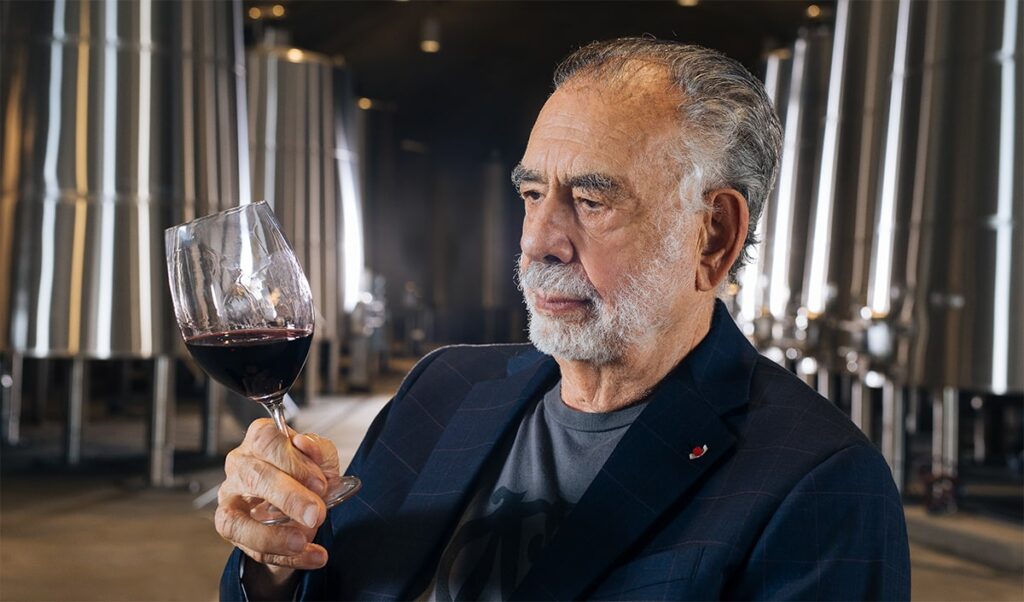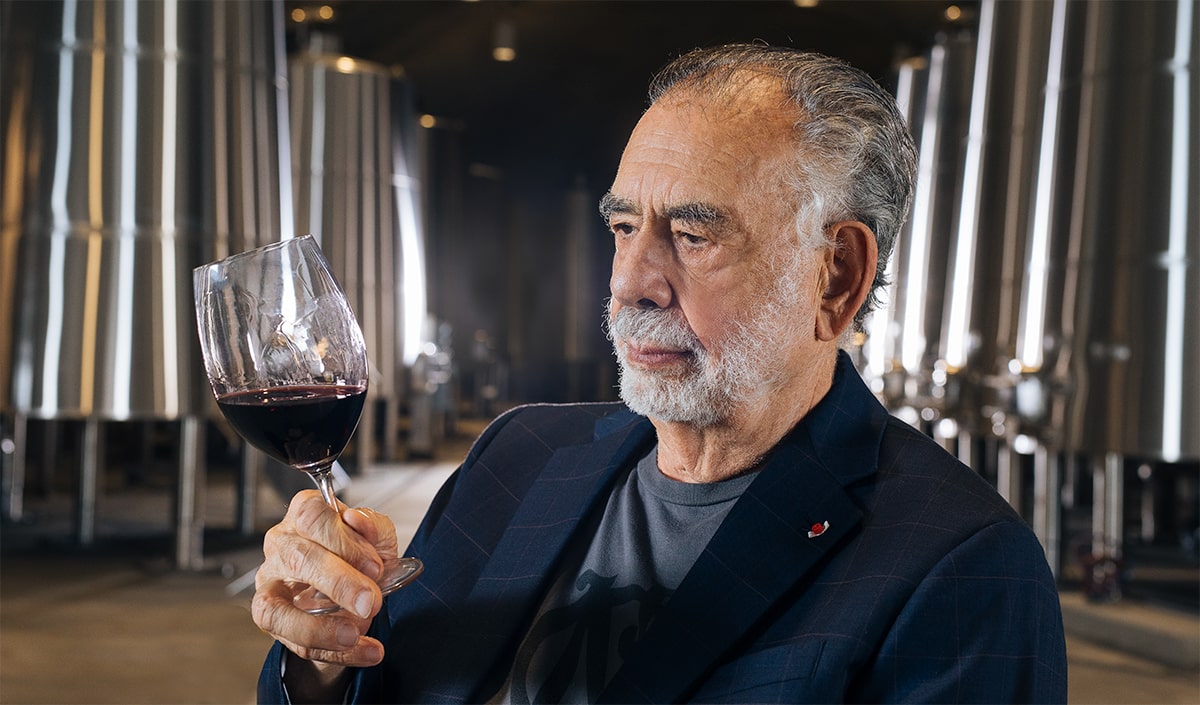Francis Ford Coppola: Organically Farmed Flavour
Famed movie director Francis Ford Coppola’s Inglenook estate winery’s new 22,000-square-foot winery cave in Napa Valley adds innovation to its already stellar world-class winemaking reputation.
Legendary motion picture director and screenwriter Francis Ford Coppola has always been an innovator. You can see that in the creativity, imagination and camera shots used in such classic films as The Godfather Parts I and II, Apocalypse Now, Bram Stoker’s Dracula and The Cotton Club, in a career that has garnered him 14 Academy Award nominations and 6 wins. As it turns out, Coppola is also an innovator away from the movie set, as his Napa Valley winery, Inglenook, has unveiled its spectacular 22,000-square-foot winery cave, built into a hillside vineyard near the majestic château of Napa’s first estate winery.
The Inglenook winery cave is distinctive for its complex engineering, size, function and dedication to specificity and customization. The new winery will be used for the first time for this year’s harvest and features 120 remotely controlled fermentation tanks that are aligned with each organically farmed vineyard block on the estate.
“Most wineries design caves for barrel aging and storage,” says proprietor Coppola, who first set foot on the property in 1975. “But we are proud that ours stands out as a 22,000-square-foot production cave where our winemaking team can craft Inglenook’s world-renowned and elegant wines. Our new winery cave is so astounding, extensive and spectacular in its visuals, dimensions and sheer audacity. Together with my family, I am just the third steward of this legendary estate. Since it was founded in Napa Valley in 1879, Inglenook has been recognized around the world for its innovation and industry leadership. This new production cave is another shining achievement in Inglenook’s illustrious 143-year history.”
Because winery caves are not usually equipped for production, adapting wine-making to a cave environment was an intricate engineering challenge. One of the most notable features is the addition of 120 brand new insulated, remotely — controlled stainless steel fermentation tanks, each of them assigned to a different block in Inglenook’s 235-acre organically farmed vineyard.
“To have each tank allocated to one vineyard block is extraordinary,” says Philippe Bascaules, Inglenook’s director of wine-making. “This level of customization in our wine-making is an important advantage that enhances our ability to make the world-renowned wines for which Inglenook is known. We now have infinite possibilities, which will lead to even more complex wines. I am very proud of everything the Inglenook team and our partners have accomplished in designing this new winery cave.”
Thirty miles of electrical and communications wiring run through six miles of conduit in the new cave. As caves naturally maintain cooler temperatures throughout the year, Inglenook’s new winery is eco-friendly and does not require heating or cooling. Tucked beneath a knoll on the south side of the estate, the entire cave is protected by sprinklers to ensure safety from the occasional threat of wildfire.
Inglenook’s founder, Gustave Niebaum, won accolades in Paris and Australia and swiftly garnered international acclaim for Inglenook’s wines in 1889, just 10 years after he founded the estate. That success was continued by his grandnephew, John Daniel Jr. Most notably, Daniel’s 1941 Cabernet Sauvignon is still widely considered by wine experts as one of the best wines of the 20th century.
Many of Niebaum’s innovations at Inglenook in the 1800s became industry standards: it instituted the first sterile bottling process in Napa Valley; it was the first to separate field debris from grapes; Inglenook planted Napa’s first Merlot in 1882; and Inglenook built its iconic château — one of the first gravity-flow wineries — in 1887.
Coppola’s involvement in the wine estate business was one of life’s happy accidents when you’re busy making other plans. In 1975 he and his wife, Eleanor, were searching for a modest vacation cottage and instead ended up purchasing Niebaum’s home and a portion of the Inglenook estate. It was one of those unexpected perfect fits, and the Coppolas soon discovered the inherent treasure in what they had discovered and vowed to reunite the vineyards of the original estate and restore Inglenook’s esteemed reputation after 11 years under ownership of a corporation.
The Coppola family produced their first vintage of Rubicon, Inglenook’s premier wine, in 1978, and purchased the estate’s château in 1995. That same year they reunited all of the contiguous vineyards of the original estate. They bought back Inglenook’s name and trademark in 2011.
Organically farmed since the 1970s, Inglenook was one of the first estates in Napa Valley to be certified organic, in 1994. In 1995, in conjunction with the Napa County Land Trust, Inglenook granted a conservation easement for 394 undeveloped acres for the preservation and protection of land in its natural condition. The estate’s commitment went further when it amassed a fleet of electric cars in 2011 to transport employees and guests around the property, with larger electric “people movers” added in 2012 and electric vans added in 2018. Additionally, Inglenook employees are encouraged to ride bicycles around the estate.
Inglenook is best known globally for its critically acclaimed Rubicon, Cabernet Sauvignon, RC Reserve Syrah and Sauvignon Blanc, as well as a distinctive Marsanne-Roussanne-Viognier blend called Blancaneaux.
One of the trademarks of his career as a director was Coppola’s hands-on approach to every aspect of every production. He is continuing that approach as the proprietor of a world-class wine estate. More than 140 years after Inglenook’s founding, its fine reputation for superb, complex and distinctive wines continues, enhanced by Francis Ford Coppola’s creativity and vision — and will only grow stronger with this newest innovation, the wine cave.






















































































